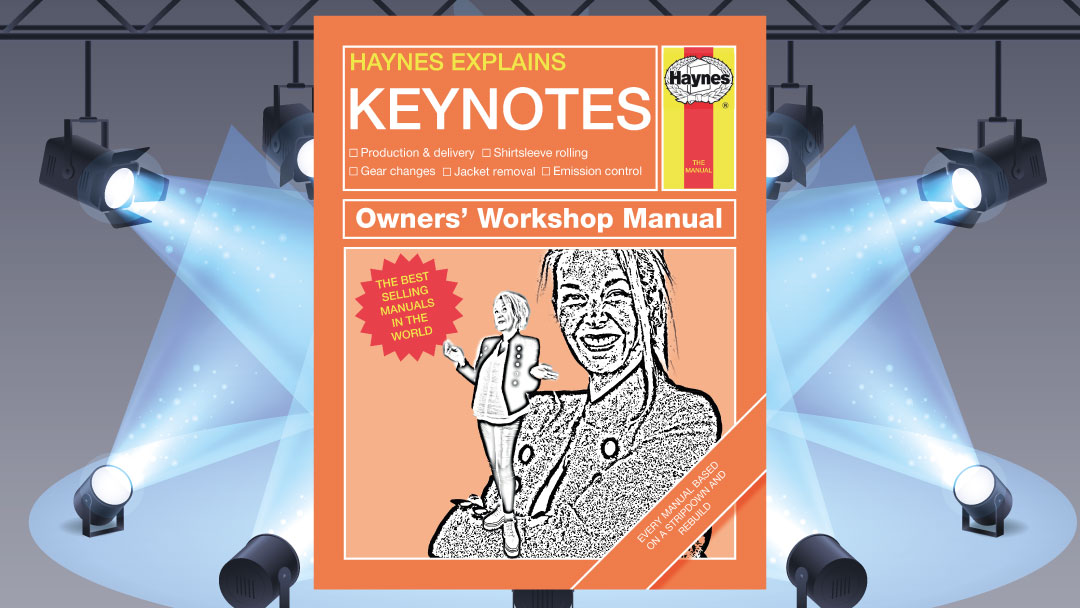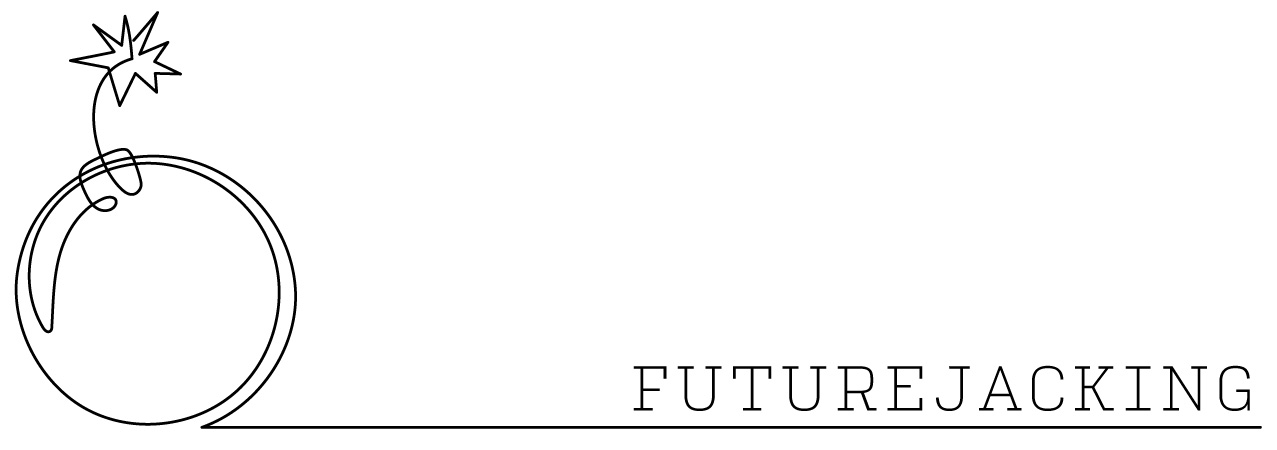
the future's been hijacked. time to steal it back.
the writing of k d adamson | ecocentrist. renegade futurist
Hacked Off

Thanks to the collision of life hacking and AI we are living through The Great Clusterhack, and LinkedIn is ground zero. But when it comes to presenting there is no Haynes Manual, and I will not hack a keynote.
Listen to 'Hacked Off'
Some people blame TikTok. And there’s nothing wrong with that. But actually the hurtling juggernaut which is ‘life hacking’ has a long and storied past that pre-dates the digital age altogether. The productivity and growth credo that underpins life hacking originally belonged to turn-of-the-century industrialists who enthusiastically embraced scientific management to optimize their factories, their workers and, of course, their profits. And so successful has this indoctrination been that today, in 2024, great swathes of the global population truly believes that the only way to live a decent life is to treat it like a job.
Over the past few years life hackers have descended upon social media like a vampiric horde, desperate to assuage its collective hunger for gamified zero-inboxes, growth-hacking and peeling ginger with a spoon. And plopping. Apparently. Pre-2023 the thirst for tips and hacks to optimise the job of life was already gargantuan, but that was before Chat-GPT came along. Now it is utterly insatiable.
Like a rare celestial alignment, the intersection of life hacking and AI has triggered an explosion of listicles, a paroxysm of tips, and an epidemic of hacks. We are living through The Great Clusterhack, and LinkedIn is ground zero.
LinkedIn content has always been the definition of hackwork, namely ‘professional work, done to order, usually according to formula and in conformity with commercial standards.’ But in the last twelve months my feed has become a Clusterhack firehose. An unending procession of AI proponents vomiting up tips and advice with titles like ‘Unlock the Power of Chat GPT and Transform Your Life,’ and ‘Amaze Your Boss and Guarantee Your Bonus with this One ChatGPT hack’.
For the most part I’m sanguine about this stuff. If you really feel the need to let ChatGPT spout motivational quotes at you, organise your inbox or write your emails then you do you. But when it comes to keynoting and presenting I draw the line. And this week someone crossed it.
Armed with the Haynes Keynote Manual that explains how all the nuts and bolts fit together you can strip one down and rebuild it for yourself, mod it out with the powerpoint equivalent of a flamer kit and some phat rims and put a donk on it.
I get asked lots of questions by lots of people. One of the most common is ‘how do I learn to be as good as you on a stage?’ It’s a question I really dislike, partly because it’s actually a compliment masquerading as a question, and being British, I’m not very good with those, but mostly because what people expect to hear in response are some ‘rules’. This is unsurprising considering that there’s already a huge industry of people making money out of the idea that a great presentation can be reduced to a set of instructions. Armed with the Haynes Keynote Manual that explains how all the nuts and bolts fit together you can strip one down and rebuild it for yourself, mod it out with the powerpoint equivalent of a flamer kit and some phat rims and put a donk on it.
This is not an idea I subscribe to. Anything that implies a keynote or any presentation in front of a live audience can be reduced to a mechanical, programmatic playbook is deeply misguided, and I have always felt that by offering advice of my own I’m just giving weight to it.
So when LinkedIn saw fit to spaff me an article by the no-doubt lovely and well-meaning Rachel Woods – formerly of Meta and now AI proponent and techno-optimist extraordinaire – which opens with the words, “I’m a more thoughtful presenter, thanks to ChatGPT. And it only costs me 5 minutes,” things were never going to end well.
Ms Woods continues: Before I give a talk, I copy/paste my speaker notes into ChatGPT and describe the audience. Then, I ask ChatGPT questions like:
- What emotions are the audience likely to feel throughout this talk
- If the audience only remembers one thing from this talk, what would that be
- What tough questions might the audience ask me in the Q&A
Every time I do this, I end up reworking the material for the better. Using AI to mimic your audience is an underrated hack. Do you ever wish you knew what your reader or listening was thinking? Well here’s your way to get it.
Unfortunately for Ms Woods it’s highly unlikely Chat-GPT would be capable of mimicking what this reader was thinking, largely due to restrictions on its use of profanity. For what this represents is really the high-water mark of the Great Clusterhack. Not only can your performance on a stage be reduced to a code, now you can use another algorithm to hack it. An algorithm which – let’s not forget – has been trained by illegally scraping the original Haynes Keynote Manual ‘rules’ already available on the web.
It is thanks to these rules that the tyranny of the mundane continues unchecked, and all Chat-GPT is capable of is regurgitating them. It’s why stages all over the world are currently populated by balding white men with gaily coloured glasses who make the first joke at 45 seconds, pick on an audience member at 2m 10 sec and then cross the stage, take their suit jacket off and roll up their sleeves at 5 minutes precisely. And frankly, my friends, audiences deserve better.
It’s worth remembering what the purpose of a ‘hack’ really means in this context. It means a shortcut, a time-saver, a way to avoid the difficult boring stuff by offloading it onto someone, or something else. This is at the heart of what Chat-GPT and its gen-AI stablemates is supposed to become: your co-pilot, something that can do the menial crap – the reading, the writing, the image generation – and let you waltz in, put your name on the bottom and take all the glory.
That’s why this is so fundamentally and profoundly wrong. Because here’s the thing. Being on a stage is not a program. It’s not an equation, and it certainly isn’t an algorithm. Actually, being on a stage with an audience is a living, breathing, emergent thing that is unique and different every, single, time.
A great presentation is a joint endeavour. It depends on empathy, connection, creativity and dynamic adaptation. It requires a deep knowledge of your material and your audience that can only be gained by doing all the difficult, menial, hard-yards work. That work gives you the ability to contextualise challenging stuff for audiences and they recognise that work and deep knowledge as clear as day. It gives them confidence in you, enables them to trust you and, if you’re very, very lucky, they will love you for it.
There aren’t many people I’ve never met that I can confidently say I love, but the legendary Alan Alda is one of them. So I was absolutely delighted to discover that when it comes to this, he agrees with me. Actually, that should come as no surprise. The great man and his writing and performances in M*A*S*H was a formative influence on me growing up in the 1970s. In an interview with Big Think (which you can watch below) he explains why he doesn’t like giving advice either, how presenting to an audience is really a dynamic process of transformation, and the three tips he will give you if you really, really push him.
So I’m going to join Alda in breaking the habit of a lifetime and give you some advice. The first bit is pretty straightforward: when it comes to advice about writing and presenting listen to Alan Alda, not the AI mongers or Chat-GPT.
For the rest, I’ll follow Alda’s rule of 3.
Number one, do the grunt work and know your material. I don’t mean just memorise it, or practice it, I mean actually live and breathe it. Ask yourself honestly if what you have to share is of sufficient importance and quality that it merits taking up an hour of someone’s life. If it doesn’t, don’t.
Secondly, remember that when you walk onto the stage your audience is also asking itself whether what you have to share is of sufficient importance and quality that it merits taking up an hour of their lives. And it is firmly in their interests that you do. Otherwise that hour could end up feeling like a lost weekend. Most speakers don’t realise that the vast majority of people in the audience are willing you to be great – other than maybe your competitor, or your sister (Think that might just be you…Ed). They are right behind you, and if you can demonstrate you’re even half-way decent, they’ll cheer you on.
Which brings me to the final, and most important part. Belong up there. And make sure the audience can see that you do. They are willing you to be great, but you have to give them the confidence from the get-go that they are in safe hands, and you have approximately 5 seconds to do it. Nerves and confidence are both contagious, so if you want that audience to relax and enjoy it, you don’t just need to own the stage, you have to make it your biatch. That means taking your time on the tech check, wandering around, getting comfy. The problem with the stage is that everyone assumes it’s everyone else’s. But it isn’t. It’s yours. Unless of course you’re on the bill with me in which case – sucks to be you – because it’s actually mine.
The Great Clusterhack shows no sign of abating. There are, and will be some life hacks that make the world an easier place. I have no objection to sharpie resurrection, cable-tie phone stands or the pool-noodle water hose. But please don’t allow yourself to be persuaded by the likes of Rachel Woods and those AI apologists that Chat-GPT is going to enable you to hack your way to a great presentation.
It puts me in mind of a famous M*A*S*H scene where Alda’s Hawkeye Pierce is told he has to carry a gun, and eloquently refuses. In homage to the original little masterpiece I’ll close with this:
I will not hack a keynote, Rachel. When I got into this business I had a very clear understanding with my audience. No hacks. I’ll make a hackneyed joke, I’ll take a hackney carriage, to Hackney Marshes, I’ll raise my hackles, perform a Haka, hacksaw a hackmatack tree, Hacker T Dog, Hakuna Matata, I’ll even play hacky sack if you show me how, but I will not, under any circumstances, hack a keynote…
Images
© iStock. K D Adamson
Total shares so far

the writing of k d adamson | ecocentrist. renegade futurist.
Futurejacking latest articles
Follow
booking inquiry
Futurejacking latest articles
americas
Suite 1, 1st Floor, Bourbon House, Bourbon Street, Castries, St. Lucia, WI
europe
The Shard, 32 London Bridge Street,
London SE1 9SG, United Kingdom



